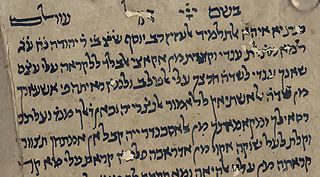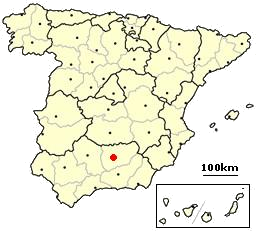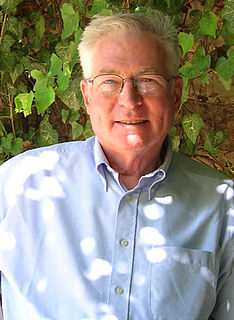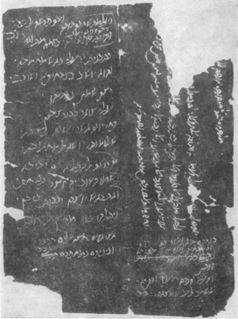
Abraham ben Meir Ibn Ezra was one of the most distinguished Jewish biblical commentators and philosophers of the Middle Ages. He was born in Tudela in northern Spain.

Sephardi Jews, also known as Sephardic Jews, Sephardim, or Hispanic Jews, are a Jewish ethnic division originating from traditionally established communities in the Iberian Peninsula. Largely expelled from the Iberian Peninsula in the late 15th century, they carried a distinctive Jewish diasporic identity with them to North Africa, including modern day Morocco, Algeria, Tunisia, Libya, and Egypt; South-Eastern and Southern Europe, including France, Italy, Greece, Bulgaria, North Macedonia and Turkey; the Middle East, including Lebanon, Syria, Iraq, and Iran; as well as the Americas ; and all other places of their exiled settlement. They sometimes settled near existing Jewish communities or were the first in new frontiers.

Judah Halevi was a Spanish Jewish physician, poet and philosopher. He was born in Spain, either in Toledo or Tudela, in 1075 or 1086, and died shortly after arriving in the Holy Land in 1141, at that point the Crusader Kingdom of Jerusalem.
The golden age of Jewish culture in the Iberian Peninsula, which coincided with the Middle Ages in Europe, was a period of Muslim rule during which, intermittently, Jews were generally accepted in society and Jewish religious, cultural, and economic life flourished.

Maqāmah are an (originally) Arabic prosimetric literary genre which alternates the Arabic rhymed prose known as Saj‘ with intervals of poetry in which rhetorical extravagance is conspicuous.

Dunash ha-Levi ben Labrat was a medieval Jewish commentator, poet, and grammarian of the Golden age of Jewish culture in Spain.

Medieval Hebrew was a literary and liturgical language that existed between the 4th and 19th century. It was not commonly used as a spoken language, but mainly in written form by rabbis, scholars and poets. Medieval Hebrew had many features that distinguished it from older forms of Hebrew. These affected grammar, syntax, sentence structure, and also included a wide variety of new lexical items, which were either based on older forms or borrowed from other languages, especially Aramaic, Greek and Latin.

Solomon ibn Gabirol was an 11th-century Andalusian poet and Jewish philosopher in the Neo-Platonic tradition. He published over a hundred poems, as well as works of biblical exegesis, philosophy, ethics and satire. One source credits ibn Gabirol with creating a golem, possibly female, for household chores.

Hasdai ibn Shaprut born about 915 at Jaén, Spain; died about 970 at Córdoba, Andalusia, was a Jewish scholar, physician, diplomat, and patron of science.
Dunash ibn Tamim was a Jewish tenth century scholar, and a pioneer of scientific study among Arabic-speaking Jews. His Arabic name was أبو سهل Abu Sahl; his surname, according to an isolated statement of Moses ibn Ezra, was "Al-Shafalgi," perhaps after his (unknown) birthplace. Another name referring to him is Adonim.
Rabbi Moses ben Jacob ibn Ezra, known as Ha-Sallaḥ was a Jewish, Spanish philosopher, linguist, and poet. He was born in Granada about 1055 – 1060, and died after 1138. Ibn Ezra was Jewish by religion but is also considered to have had great influence in the Arabic literary world. He is considered one of Spain's greatest poets and was thought to be ahead of his time in terms of his theories on the nature of poetry. One of the more revolutionary aspects of Ibn Ezra's poetry that has been debated is his definition of poetry as metaphor and how his poetry illuminates Aristotle's early ideas. The impact of Ibn Ezra's philosophical works was minor compared to his impact on poetry, but they address his concept of the relationship between God and man.

Hebrew literature consists of ancient, medieval, and modern writings in the Hebrew language. It is one of the primary forms of Jewish literature, though there have been cases of literature written in Hebrew by non-Jews. Hebrew literature was produced in many different parts of the world throughout the medieval and modern eras, while contemporary Hebrew literature is largely Israeli literature. In 1966, Agnon won the Nobel Prize for Literature for novels and short stories that employ a unique blend of biblical, Talmudic and modern Hebrew, making him the first Hebrew writer to receive this award.
Jonah ibn Janah or ibn Janach, born Abu al-Walīd Marwān ibn Janāḥ, was a Jewish rabbi, physician and Hebrew grammarian active in Al-Andalus, or Islamic Spain. Born in Córdoba, ibn Janah was mentored there by Isaac ibn Gikatilla and Isaac ibn Mar Saul, before he moved around 1012, due to the sacking of the city. He then settled in Zaragoza, where he wrote Kitab al-Mustalhaq, which expanded on the research of Judah ben David Hayyuj and led to a series of controversial exchanges with Samuel ibn Naghrillah that remained unresolved during their lifetimes.

Jewish literature includes works written by Jews on Jewish themes, literary works written in Jewish languages on various themes, and literary works in any language written by Jewish writers. Ancient Jewish literature includes Biblical literature and rabbinic literature. Medieval Jewish literature includes not only rabbinic literature but also ethical literature, philosophical literature, mystical literature, various other forms of prose including history and fiction, and various forms of poetry of both religious and secular varieties. The production of Jewish literature has flowered with the modern emergence of secular Jewish culture. Modern Jewish literature has included Yiddish literature, Ladino literature, Hebrew literature, and Jewish American literature.
Abū Muhammad al-Qāsim ibn Alī ibn Muhammad ibn Uthmān al-Harīrī, popularly known as al-Hariri of Basra was an Arab poet, scholar of the Arabic language and a high government official of the Seljuk Empire.

Joseph Yahalom is a professor of Hebrew literature at the Hebrew University of Jerusalem. Since 1983, he has been a member of the Academy of the Hebrew Language.

Riddles in Hebrew are referred to as חידות ḥidot. They have at times been a major and distinctive part of literature in Hebrew and closely related languages. At times they have a complex relationship with proverbs.
Qasmūna bint Ismāʿil, sometimes called Xemone, was an Iberian Jewish poet. She is the only female Arabic-language Jewish poet attested from medieval Andalusia, and, along with Sarah of Yemen and the anonymous wife of Dunash ben Labrat, one of few known female Jewish poets throughout the Middle Ages.

The riddles of Dunash ben Labrat are noted as some of the first recorded Hebrew riddles, and part of Dunash's seminal development of Arabic-inspired Andalusian Hebrew poetry. Unlike some later Andalusian Hebrew riddle-writers, Dunash focused his riddles on everyday objects in the material world. His writing draws inspiration from the large corpus of roughly contemporary, poetic Arabic riddles.

The literature of al-Andalus, also known as Andalusi literature, was produced in Al-Andalus, or Islamic Iberia, from the Muslim conquest in 711 to either the Catholic conquest of Granada in 1492 or the Expulsion of the Moors ending in 1614. Andalusi literature was written primarily in Arabic, but also in Hebrew, Judeo-Arabic, Aljamiado, and Mozarabic.











